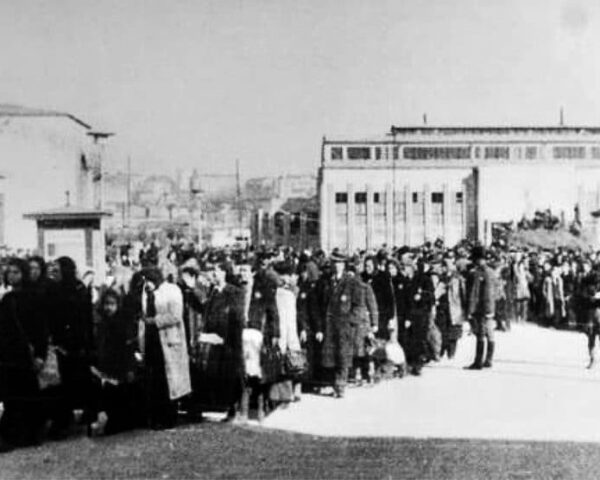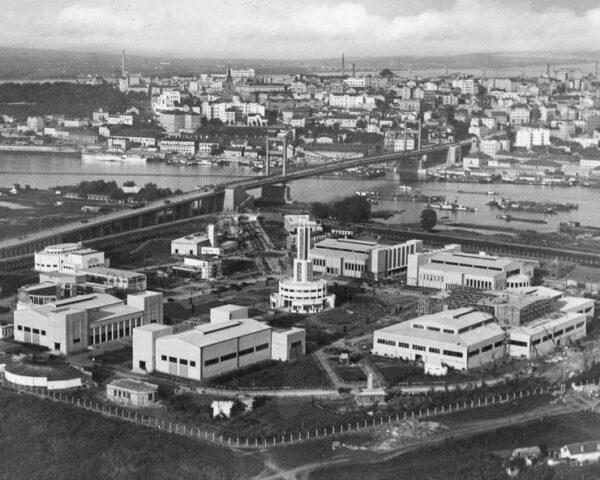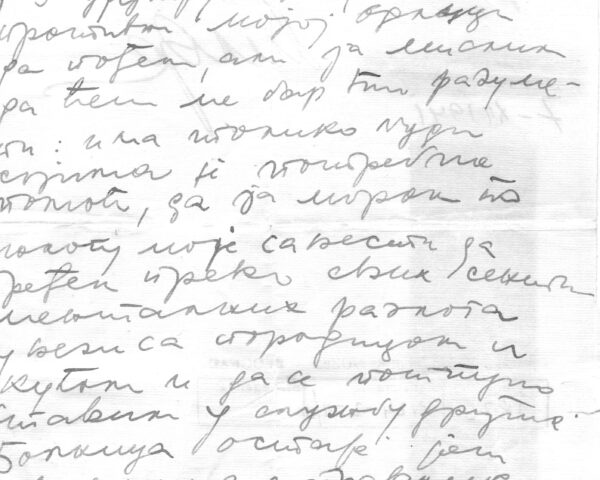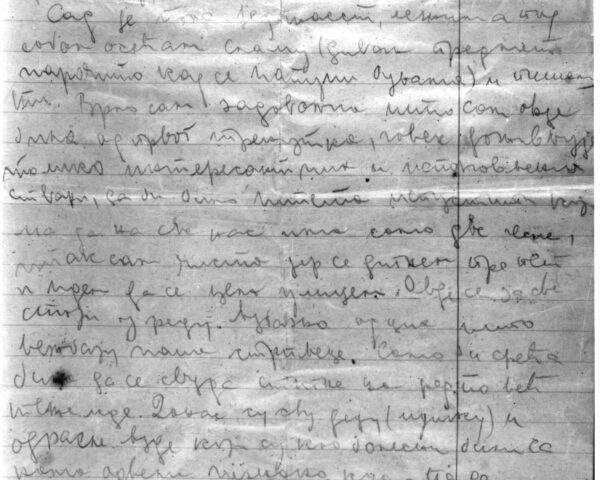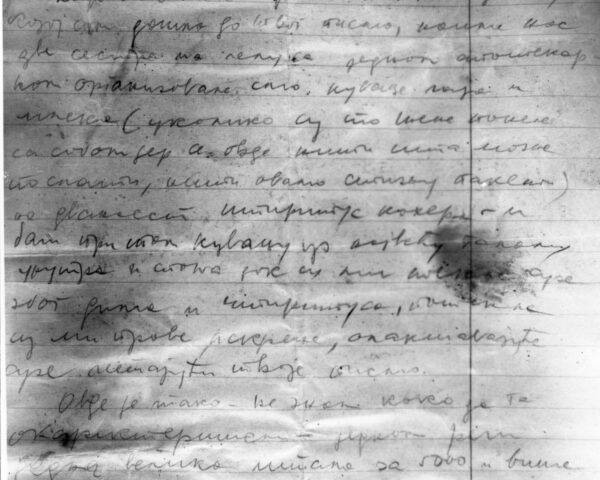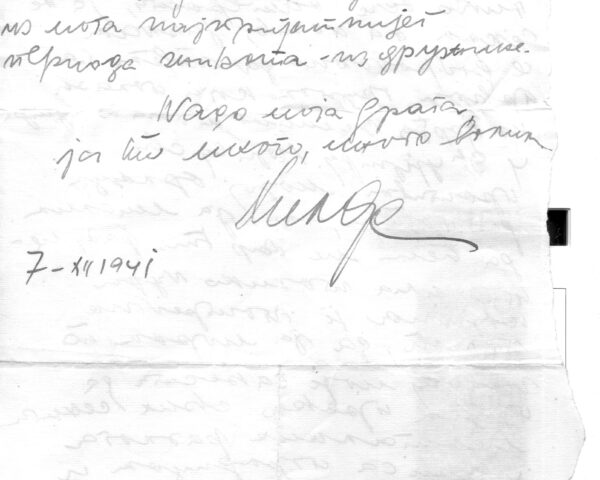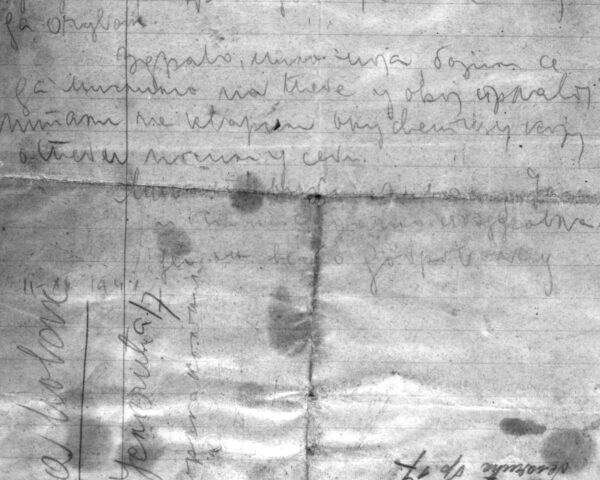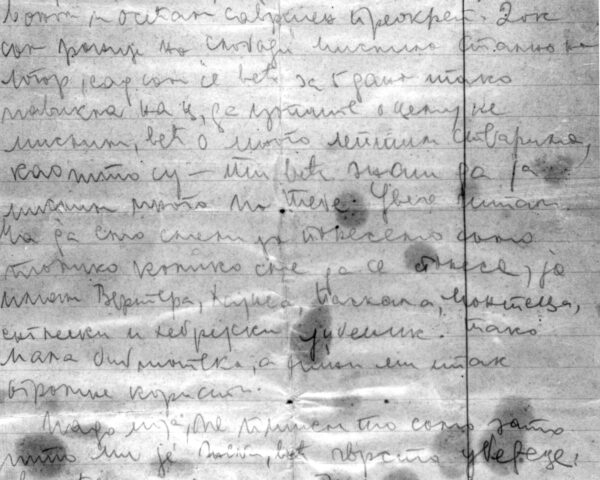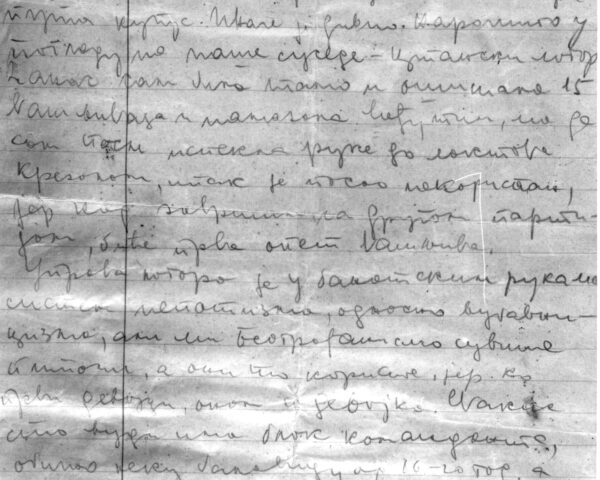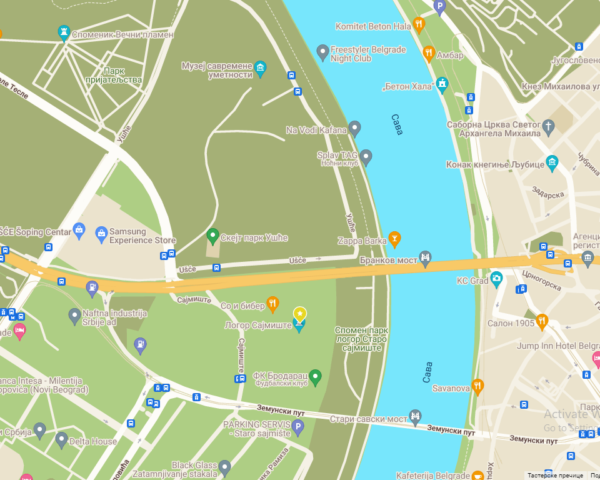Hilda Dajč was born in 1922 to an affluent Ashkenazi Jewish family which included her parents, Emil and Augusta, and younger brother Hans. Before the war, having graduated from High School as one of the top students of her generation, Hilda enrolled to study architecture at the University of Belgrade. After her studies were interrupted by the invasion of Yugoslavia by Nazi Germany in April 1941, Hilda volunteered as a nurse at the Jewish hospital in Belgrade...
Hilda
Dajč

Stage 5 - Organization
Hilda Dajč was born in 1922 to an affluent Ashkenazi Jewish family which included her parents, Emil and Augusta, and younger brother Hans. Before the war, having graduated from High School as one of the top students of her generation, Hilda enrolled to study architecture at the University of Belgrade. After her studies were interrupted by the invasion of Yugoslavia by Nazi Germany in April 1941, Hilda volunteered as a nurse at the Jewish hospital in Belgrade...
Hilda Dajč
Hilda Dajč was born in 1922 to an affluent Ashkenazi Jewish family which included her parents, Emil and Augusta, and younger brother Hans. Before the war, having graduated from High School as one of the top students of her generation, Hilda enrolled to study architecture at the University of Belgrade. After her studies were interrupted by the invasion of Yugoslavia by Nazi Germany in April 1941, Hilda volunteered as a nurse at the Jewish hospital in Belgrade.
In the early months of the occupation, Hilda’s father, Emil Dajč took on the role of Vice- President of the Vertretung der Judischen Gemainchaft, the Representative Body of the Jewish Community in Belgrade. The organisation, established by the Nazis, took over the affairs of the community from various Jewish communal bodies, charities and other institutions which operated before the war, and were closed down by the occupiers. Emil Dajč’s involvement with the Representative Body in the initial stages of the occupation meant that Hilda’s family was unaffected by many of the harsh antisemitic measures and policies which other Jews in Belgrade were subjected to at the time.
In December 1941, after most of the country’s male Jewish population were killed as part of the retaliatory executions (Geiselmordpolitik) carried out by the Wehrmacht. In response to acts of insurgency and sabotage, the Jewish women and children were ordered to pack their personal belongings and report to the head office of the Judenreferat, the Jewish Section of the Special Police at no.23 George Washington Street. After handing in the keys to their properties, around 5000 Jewish women and children were taken to the adapted Pavillion no. 3 at the newly established Judenlager Semlin. Although families of the leadership of the Jewish Representative Body were not obliged to comply with this order, Hilda defied her parents’ wishes, and volunteered to go to the camp to continue to perform nursing duties among, as she put it, the ‘people in need’.
The date of Hilda Dajč’s death is not known, although it is certain that she was killed along with over 6,000 Jewish women, children and elderly in a mobile gas van which was brought to the Semlin Judenlager in March 1942. Between late March and 10 May 1942, interns were taken, in groups of between 50 and 100, on their last journey to the burial grounds at Jajinci.
Organization
Genocide is always organized, usually by the state, usually using paramilitary forces that are not directly linked to the apparatus of power so that state involvement can be denied. Special units of the army or paramilitary forces receive training and are armed, while secret police track, arrest, and torture people suspected of opposition activities.
To prevent this stage from occurring, action must be taken at the state level – outlaw paramilitary organizations, deny entry to other countries, and freeze funds in international banks in accounts belonging to such organizations. In addition, it should be legally possible to investigate examples of human rights violations and initiate legal proceedings against perpetrators and perpetrators.
How does this person’s story illustrate response to the particular stage of genocide in Dr. Stanton’s theory?
Hilda’s family was in a privileged situation due to the position held by her father. Until a certain point, she managed to avoid the fate of other Serbian Jews and did not experience many of the harsh anti-Semitic measures and policies to which other Jews in Belgrade were subjected to at the time. Working as a volunteer in a hospital, Hilda had to deal with victims of organised anti-Jewish activities on a daily basis. Her father, who was vice president of the Representative Body of the Jewish Community in Belgrade, certainly brought home news of organised Nazi activities. Despite this knowledge and her daily experiences, Hilda decided to voluntarily dedicate herself to the Semlin camp in order to resist organised violence, help others and preserve her dignity.
AUTHOR: Miško Stanišić, Terraforming


